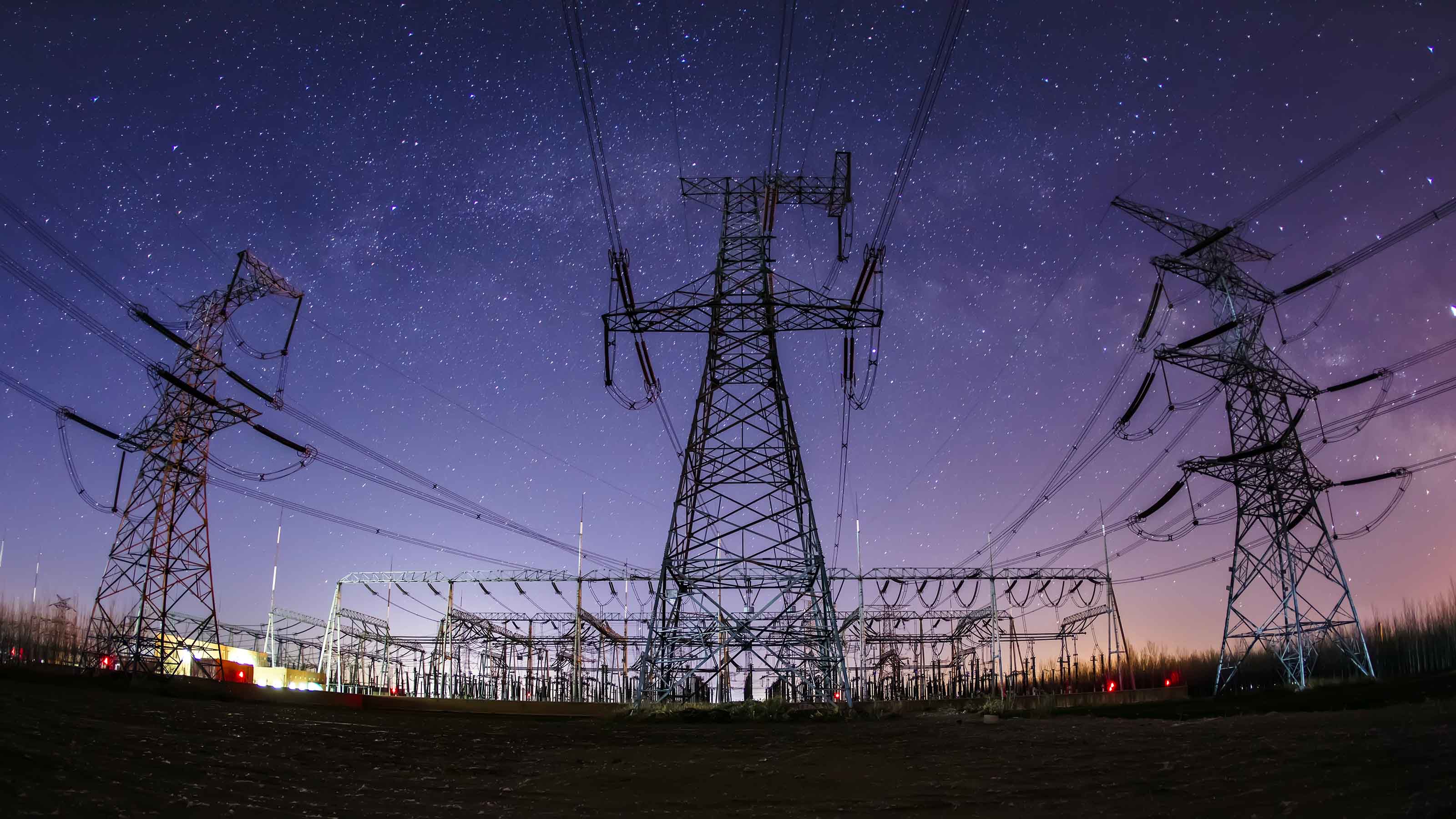3 Infrastructure ETFs to Harness the Spending Boom
President Joe Biden has signed a $1.2 trillion infrastructure bill into law. These infrastructure ETFs should benefit as a result.


A massive overhaul of the nation's infrastructure has finally been set into motion.
President Joe Biden's $2.25 trillion American Jobs Plan didn't have the legs to make it through Congress. However, the Senate and the House finally passed a $1.2 trillion compromise – dubbed the Infrastructure Investment and Jobs Act – which the president has recently signed into law.
Investors looking for ways to capitalize on this new law might want to set their own sights on infrastructure ETFs, which could benefit from this historic spending initiative.
"This legislation marks the largest federal investment in infrastructure in over a decade," says Jefferies Equity Research. "The IIJA contains $550 billion in new spending, including $110 billion intended for roads, bridges and other major projects, $40 billion for bridge repairs/replacement, $39 billion for modernizing public transit, $66 billion for Amtrak/rail, $65 billion for power grid upgrades, $65 billion for broadband, $55 billion for drinking water, $50 billion for climate resilience, $25 billion for airport repairs, $21 billion for environmental remediation, $11 billion for transportation safety, $7.5 billion for EV charging stations and $5 billion for school buses."
To be clear, it's important for investors to understand that when you're talking about infrastructure stocks, you're not talking about a single sector in itself. It's a general term referring to a combination of systems related to a business, nation or region. You'll actually find numerous sectors within infrastructure ETFs, including industrials, basic materials, energy and communication services.
"Infrastructure spending will impact many companies, providing cross-sector thematic ETFs with an opportunity to shine," says Todd Rosenbluth, Head of ETF & Mutual Fund Research for independent research outfit CFRA.
Today, we'll take a look at three of the largest infrastructure ETFs on the market that could get a boost from the Infrastructure Investment and Jobs Act. All of these are ETFs that Rosenbluth likes for potential growth opportunities both in the U.S. and around the globe.
Disclaimer
Data is as of Nov. 15. Yields represent the trailing 12-month yield, which is a standard measure for equity funds.

iShares Global Infrastructure ETF
- Assets under management: $3.2 billion
- Dividend yield: 2.6%
- Expenses: 0.43%, or $43 for every $10,000 invested
The iShares Global Infrastructure ETF (IGF, $47.83) is a straightforward infrastructure-themed ETF whose holdings include shares of transportation, communication infrastructure, water and electricity services companies around the world.
"As the ETF's name suggests, this is a global strategy with just 34% in U.S. companies and double-digit exposure to Canada and Australia, with smaller stakes in China, Italy and Spain," Rosenbluth said in an April note.
Thus, shareholders have an ETF that can prove beneficial for infrastructure spending in the U.S., but also for reopening global economies in a post-Covid world.
The IGF portfolio is made up of three sectors: utilities, industrials and energy. The significant exposure to utilities here illustrates well how infrastructure impacts much more than just industrial stocks. While its largest exposure is to the industrial sector (40%, most of which is transports), utilities make up another 39%, with energy accounting for the rest.
IGF's exposure to non-U.S. stocks and to sectors outside of industrials and materials can provide greater diversification than more concentrated infrastructure ETFs. But the degree of direct benefit from the infrastructure bill could prove to be less.
IGF currently garners a respectable three of five stars from CFRA.

Global X U.S. Infrastructure Development ETF
- Assets under management: $5.3 billion
- Dividend yield: 0.3%
- Expenses: 0.47%
Global X U.S. Infrastructure Development ETF (PAVE, $28.80) is an exchange-traded fund that offers concentrated exposure to U.S.-listed infrastructure stocks. It's also the largest infrastructure ETF on the market, courtesy of $3.8 billion in inflows this year driven primarily by optimism about the spending bill.
PAVE's U.S.-focused portfolio is an opportunistic way to capitalize on the Infrastructure Investment and Jobs Act, given its focus on companies involved in construction, raw materials and industrial transportation.
"PAVE invests in more cyclical sectors than many of its peers," Rosenbluth says. "At the end of July, PAVE had 71% of assets in industrials and 22% in materials, with some of the remainder in consumer discretionary and information technology stocks." PAVE boasts the same sector ratios today.
Top holdings at the moment include steelmaker Nucor (NUE) and power management specialist Eaton (ETN) at more than 3% of assets each.
Adding to the allure of this infrastructure ETF, CFRA gives the fund its highest rating of five stars.

FlexShares Stoxx Global Broad Infrastructure Index Fund
- Assets under management: $2.7 billion
- Dividend yield: 2.3%
- Expenses: 0.47%
FlexShares Stoxx Global Broad Infrastructure Index Fund (NFRA, $57.91) is an ETF that offers a balance of U.S. and non-U.S. infrastructure stocks, providing investors with exposure to publicly traded developed and emerging-market companies.
A distinguishing feature of this infrastructure ETF is its outsized portfolio allocation to the communication services sector, which comprises about 27% of the fund's holdings. This sector focus could prove to be beneficial given a massive cash infusion from the IIJA to expand broadband access.
"The Biden infrastructure proposal includes spending to upgrade broadband capabilities across the U.S. that would be a boost for some communications companies," Rosenbluth says.
Driving the communications sector weightings in NFRA are holdings such as Comcast (CMCSA) and Verizon (VZ). Other sector exposure for NFRA includes energy at nearly 30%, transportation at 24% and utilities at 8%.
Like with IGF, NFRA earns three of five stars from CFRA.
Learn more about NFRA at the FlexShares provider site.
Disclaimer
Kent Thune did not hold positions in any of these funds as of this writing. This article is for information purposes only, thus under no circumstances does this information represent a specific recommendation to buy or sell securities.
Get Kiplinger Today newsletter — free
Profit and prosper with the best of Kiplinger's advice on investing, taxes, retirement, personal finance and much more. Delivered daily. Enter your email in the box and click Sign Me Up.

Kent Thune, CFP, is a financial professional that helps individuals and businesses achieve their goals through a variety of delivery methods, including investment advice, financial planning and writing.
-
 Customer Services are Strained at the SSA, You Should Plan Around These Federal Holidays
Customer Services are Strained at the SSA, You Should Plan Around These Federal HolidaysIf you have a question or need information from a federal agency, check the federal holiday schedule to make sure you get your business done before they close.
By Donna LeValley
-
 Stock Market Today: No 'Powell Put'? No Problem
Stock Market Today: No 'Powell Put'? No ProblemInvestors, traders and speculators look beyond both another Trump post and more signs of slowing economic activity.
By David Dittman
-
 Future U.S. Economic Growth Hinges on Immigrants
Future U.S. Economic Growth Hinges on ImmigrantsThe Kiplinger Letter With the native birthrate slipping, employers are increasingly relying on foreign-born workers to staff up.
By David Payne
-
 10 Predictions for 2024 from The Kiplinger Letter
10 Predictions for 2024 from The Kiplinger LetterThe Kiplinger Letter As 2023 wraps up, here are 10 big predictions for the new year.
By Letter Editors
-
 How A Government Shutdown Could Affect You
How A Government Shutdown Could Affect YouA government shutdown would put tens of thousands of federal workers on furlough and interrupt certain services.
By Esther D’Amico
-
 Dividends Are in a Rut
Dividends Are in a RutDividends may be going through a rough patch, but income investors should exercise patience.
By Jeffrey R. Kosnett
-
 Municipal Bonds Stand Firm
Municipal Bonds Stand FirmIf you have the cash to invest, municipal bonds are a worthy alternative to CDs or Treasuries – even as they stare down credit-market Armageddon.
By Jeffrey R. Kosnett
-
 High Yields From High-Rate Lenders
High Yields From High-Rate LendersInvestors seeking out high yields can find them in high-rate lenders, non-bank lenders and a few financial REITs.
By Jeffrey R. Kosnett
-
 Time to Consider Foreign Bonds
Time to Consider Foreign BondsIn 2023, foreign bonds deserve a place on the fringes of a total-return-oriented fixed-income portfolio.
By Jeffrey R. Kosnett
-
 Opportunity Zones in 2023: A Look Back, a Look Forward
Opportunity Zones in 2023: A Look Back, a Look ForwardIs now the perfect storm for investors? Don’t take your eye off the ball — investing in opportunity zones is well situated to offer meaningful tax benefits to knowledgeable investors.
By Daniel Goodwin
